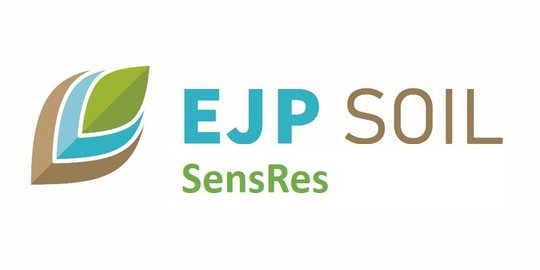SensRes
| Start: | 1 February 2021 |
| Duration: | 36 Months |
| Aim: | Proposing and testing a new method to downscaling large-extent soil maps to higher resolutions using proximal sensors, drones and satellite images. |
| Keywords: | Proximal sensors, remote sensing, electromagnetic induction, UAV, satellite, downscaling, soil organic carbon, soil texture, erosion, plant-available water |
| Contact: | Project coordinator: Mogens Humlekrog Greve (greve@agro.au.dk) Project communication representative: |

Soil maps for large areas often fail to account for local variation in soil properties, due to their coarse resolutions. However, remote and proximal sensors can provide highly detailed soil information at a local level.
We therefore propose a method to downscale large-extent soil maps using sensor data. We will test the method for agricultural fields in seven European countries, using proximal sensors, drone images and satellite images. The mapped soil properties will include soil organic carbon, soil texture and locally important soil properties.
We will test drone and satellite images of bare soils and vegetated fields, and we will test the effect of fusion data from different sensors. We will also test the potential for using the downscaled soil maps in practical applications.
Project leader and partners
Project Leader:
Aarhus University (AU)
Responsible person from organization: Lucas de Carvalho Gomes
Project partners:
Stichting Wageningen Research (WR)
Responsible person from organization: Saskia KEESSTRA
Lithuanian Research Centre for Agriculture and Forestry (LAMMC)
Responsible person from organization: Renaldas ŽYDELIS
Ministry of Agriculture and Forestry/General Directorate of Agricultural Research and Policies (TAGEM)
Responsible person from organization: İsmail ÇİNKAYA
Agri-Food and BioSciences Institute (AFBI)
Responsible person from organization: Suzanne HIGGINS
Call text: MT1
Good knowledge of the present status of agricultural soils: Innovative techniques for high-detail mapping soil spatial variation
Rationale
Soil is a complex mixture of organic and inorganic constituents with different physical, chemical and biological properties, that shows large variability from site to site or even within the same field. Space-borne and airborne remote (hereafter as “remote”) sensing has several benefits such as obtaining soil surface and topsoil information from large areas, providing information for inaccessible areas, providing additional data (e.g. status of vegetation), consistent temporal resolution for the creation of time series, short revisit time and providing freely available data.
Remote surveys have the advantage to get a more exhaustive evaluation of spatial variation than with on-site sampling methods. To map larger areas for accurate estimation of SOC and other soil characteristics these methods still require improvements aiming to enhance their resolution and to reduce impacts of artefacts induced by soil roughness, moisture and vegetation litter.
Although several attempts to improve the accuracy of remotely mapped soil properties were undertaken, none of these approaches is capable to assess soil properties in the desired resolution and accuracy. Combining these technologies into a EU observation network could also interestingly rely on participatory science approaches providing field observations for calibration and testing or for increasing mapping resolution.
Scope
This project will focus on developing and testing these novel technologies for measuring soil characteristics (e.g. soil salinity, SOC) and soil evaluation, in the different environmental zones and soil types in Europe.
Output/Expected impact: Novel technologies available for measuring soil characteristics and evaluating soils
Project type: Two / medium size projects / per project 150 PM
Available funding: 2*1.73 M€